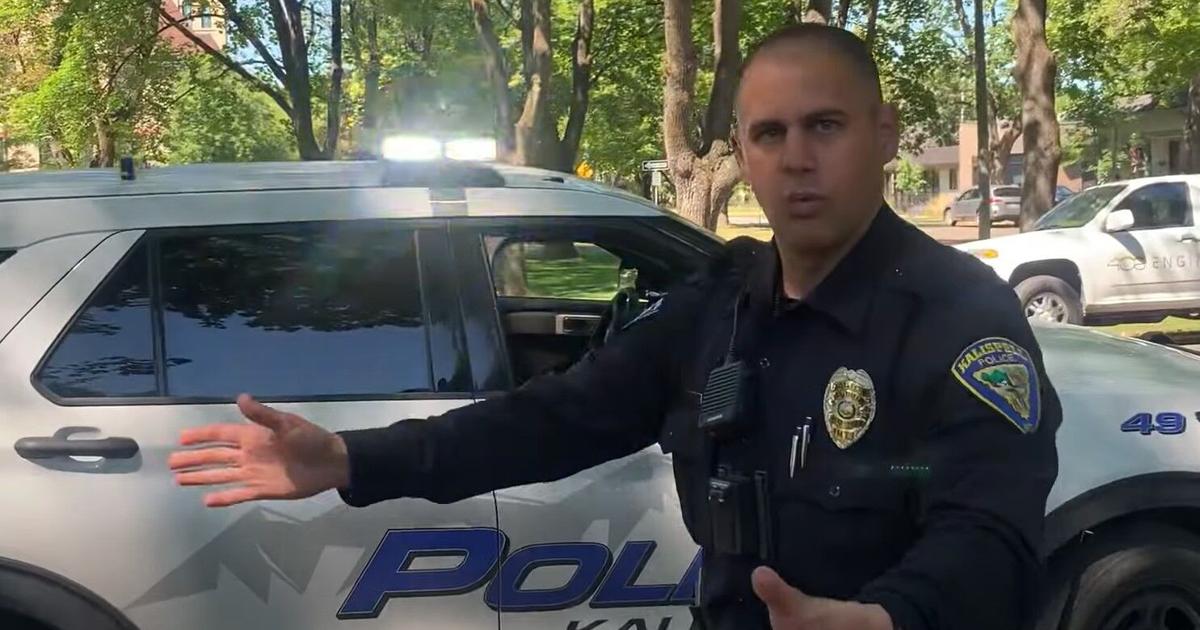
The line between the constitutional right to film the police conducting law enforcement business and the crime of obstructing that officer’s investigation is at the heart of a case heard by the Montana Supreme Court on Wednesday.
Sean Doman was arrested for obstructing police for filming a traffic stop in 2022 and has taken his case to the state’s high court, arguing the charge violated his First Amendment protections.
“Constitutionally protected conduct cannot be the basis of the obstructing charge,” Carrie Gibadlow, representing Doman on Wednesday, said during the hearing.
The Montana Attorney General’s Office has taken the lead in defending Doman’s conviction on the appeal and contended on Wednesday his actions interfered with the traffic stop.
“The right to record police activities is not without limitations,” assistant attorney general Thad Tudor argued.
Background
Doman was riding his bicycle through Kalispell in July 2022 when he stopped at a mid-day scene where an officer had pulled over a Native American man who made a turn without using his blinker. Doman pulled out his phone and began recording a two-minute video that’s now posted on Youtube. At some point, the first policeman involved in the traffic stop, Officer Dustin Willey, calls for backup because Doman is recording the scene.
Doman wobbles the camera around and, after some commentary about the incoming officer’s driving, says, “Here we go.”
The second policeman, identified in court documents as officer George Minaglia, pulls up and begins asking Doman to take several steps back.
“First Amendment-protected activity,” Doman says while sidestepping in the direction Minaglia points him.
“Yup, I agree, just do me a favor and get out of where we’re working,” Minaglia responds.
The conversation is relatively tame until Doman states he needs to be able to capture audio on his phone. The tone then sharpens as Doman refuses to step off the sidewalk and Minaglia eventually reaches up to block the camera’s view; his palm is the last frame of the video.
According to court documents, Doman called the officer a “tyrant” and he was arrested within 90 seconds of Minaglia arriving on the sidewalk.
Filming on scene
The right to record police as they conduct law enforcement business is well-established in First Amendment territory; the earliest citation offered up by Doman’s attorneys comes from a case in 1966. The question contemplated by the state supreme court on Wednesday where the legal limitations land on that right.
Montana Chief Justice Cory Swanson on Wednesday, however, noted that three videos from the event are available from the Kalispell city police, providing some transparency from the law enforcement system itself. Swanson also noted Doman seemed “belligerent” during the encounter.
“Even if there was still accountability within policing, his ability to create some transparency is being hindered by the government,” Gibadlow said.
“If we take the state’s position that there is an underlying threat of officer safety in every traffic stop, we run the risk of abolishing the right to record in every traffic stop,” she added later.
Swanson also disputed Tudor’s characterization that Doman had no “legitimate basis for being there.”
“His legitimate basis for being there is filming,” Swanson said. “It’s a matter of, ‘Do you have a constitutional right to film in their hip pocket,’ that’s what we’re trying to parse here.”
Both officers said in the lower court hearings that Doman was distracting; Willey said that the escalating exchange between Doman and Minaglia took his attention “completely” off the traffic stop.
“As close as he was, was injecting himself into the traffic stop,” Tudor said during the hearing.
Room for debate
One of the bigger-picture arguments before the Supreme Court this week was that the state law outlining obstruction of a police officer was improperly handled by the lower court. The law states, “It is no defense to a prosecution under this section that the peace officer was acting in an illegal manner, provided that the peace officer was acting under the peace officer’s official authority.”
During the proceedings in Kalispell Municipal Court, prosecutors raised that provision to prohibit Doman from claiming his First Amendment as a defense.
Typically, arguments that weren’t made in the lower court can’t be raised on appeal such as this one. Doman’s lawyers are attempting a legal maneuver known as plain error review, in which a party asks courts to take a new matter up if it implicates a person’s constitutional rights.
The justices during Wednesday’s hearing were still looking for a way to weigh that criminal statute against Doman’s constitutional right to film the officers.
“The virtue of the fact that you’re engaging in constitutionally protected conduct does not protect all of the actions you may be taking,” Justice Jim Shea told Gibadlow.
Gibadlow noted throughout the hearing that the second officer was only called to the scene because Doman was recording; any claims of interference with the traffic stop were secondary to that point when Willey radioed for backup.
“Sean was exercising a constitutional right, but it wasn’t just a constitutional right,” she responded. “It was a constitutional right that the courts have widely accepted serves the public interest.”
The Supreme Court took no action on the matter at the conclusion of Wednesday’s hearing.
Seaborn Larson has worked for the Montana State News Bureau since 2020. His past work includes local crime and courts reporting at the Missoulian and Great Falls Tribune, and daily news reporting at the Daily Inter Lake in Kalispell.
Love
0
Funny
0
Wow
0
Sad
0
Angry
0
Get Government & Politics updates in your inbox!
Stay up-to-date on the latest in local and national government and political topics with our newsletter.
* I understand and agree that registration on or use of this site constitutes agreement to its user agreement and privacy policy.
Seaborn Larson
State Bureau Reporter
Get email notifications on {{subject}} daily!
Your notification has been saved.
There was a problem saving your notification.
{{description}}
Email notifications are only sent once a day, and only if there are new matching items.
Followed notifications
Please log in to use this feature
Log In
Don’t have an account? Sign Up Today



